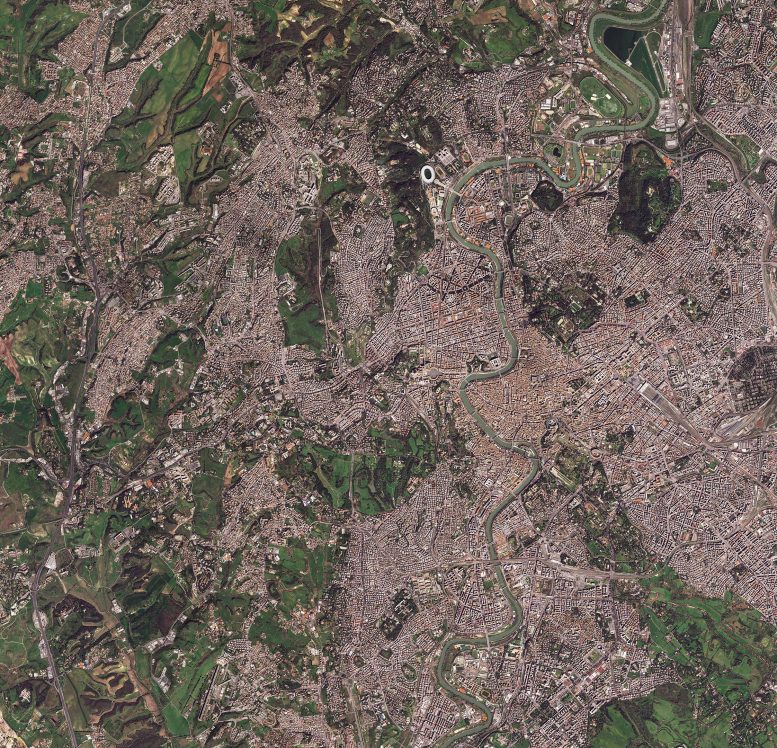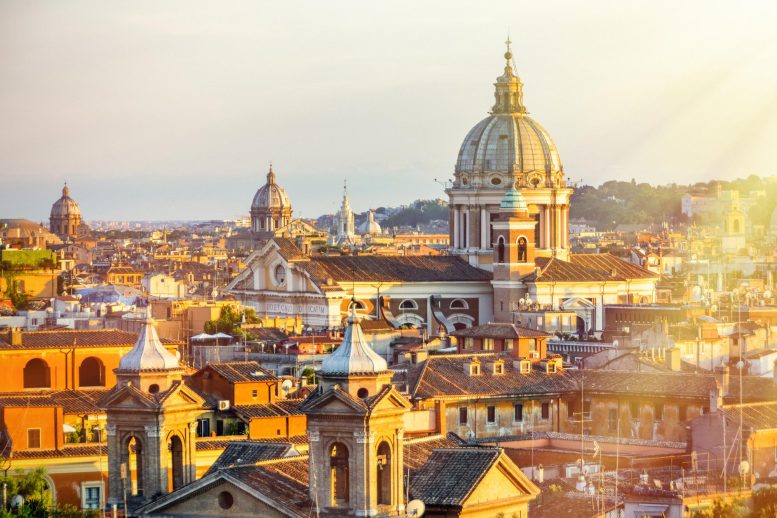
This image, featuring Rome, Italy, was acquired by the Pléiades Neo mission, a very high-resolution optical constellation. Pléiades Neo is part of ESA’s Third Party Missions programme, which means ESA uses its multi-mission ground systems and expertise to acquire, process, distribute and archive data from a wide range of satellite missions developed and operated by other agencies. Credit: Airbus DS (2023), processed by ESA
The historic center of Rome, Italy’s capital city, is featured in this satellite image captured on March 28, 2023.
Known as the Eternal City, Rome lies on the banks of the Tiber River, the third longest river in Italy. The Tiber can be seen snaking its way through the city. The color of the river water, owing to the sandy and silty riverbed, is why the Tiber is sometimes known as the “blond river.”
A number of world-famous sites are visible in this image.
The distinctive oval shape of the Colosseum, the largest Roman amphitheater ever built, stands out near the center-right of the image, on the east side of the river and adjacent to the ruins of the Roman Forum and Palatine Hill.
Below that is the elongated outline of the Circus Maximus, which was the largest chariot racetrack in ancient Rome. To the left on a bend in the river, is the boat-shaped Tiber Island, the only island in the urban part of the river.

Rome, the capital city of Italy, is an ancient metropolis steeped in rich history and brimming with cultural treasures. Founded in 753 BC, it is often referred to as the “Eternal City” and played a pivotal role as the center of the Roman Empire. Rome’s historic center is a UNESCO World Heritage Site, boasting countless architectural marvels, including the Colosseum, the Roman Forum, and the Pantheon. As the seat of the Roman Catholic Church, it is also home to the Vatican City, an independent city-state enclaved within Rome, where St. Peter’s Basilica and the Vatican Museums attract millions of visitors each year. Today, Rome seamlessly blends its ancient roots with the modern world, making it a vibrant, cosmopolitan destination that captivates travelers with its enduring charm and exquisite cuisine.
Following the Tiber northwards, we find, to the east of the elliptical shape of Piazza Navona, the white open-topped dome of the Pantheon, which is 142 feet (43 meters) in diameter.
A little further north on the other side of the river, we can see the sovereign state of Vatican City, with St. Peter’s Basilica and its famous square. The star-shaped Castel St. Angelo is also visible nearby. It was the tomb of Emperor Hadrian, but later served as a fortress.
As evident in the image, Rome has many green spaces: parks, historic villas, and public gardens, together covering about 4000 hectares.
This image was acquired by the Pléiades Neo mission, a very high-resolution optical constellation. Pléiades Neo is part of ESA’s Third Party Missions program, which means ESA uses its multi-mission ground systems and expertise to acquire, process, distribute and archive data from a wide range of satellite missions developed and operated by other agencies.








Be the first to comment on "Exploring Earth From Space: Rome, Italy"